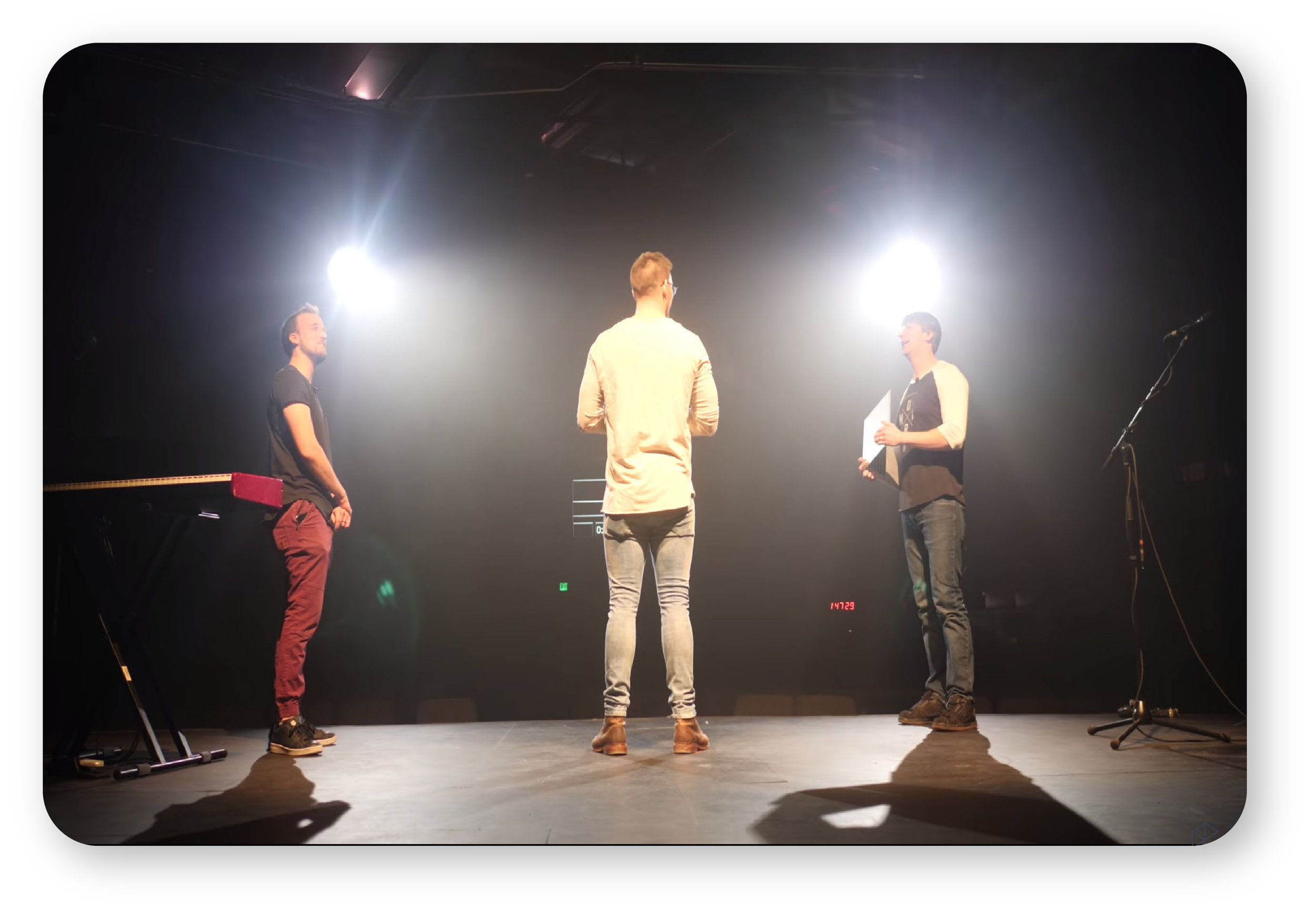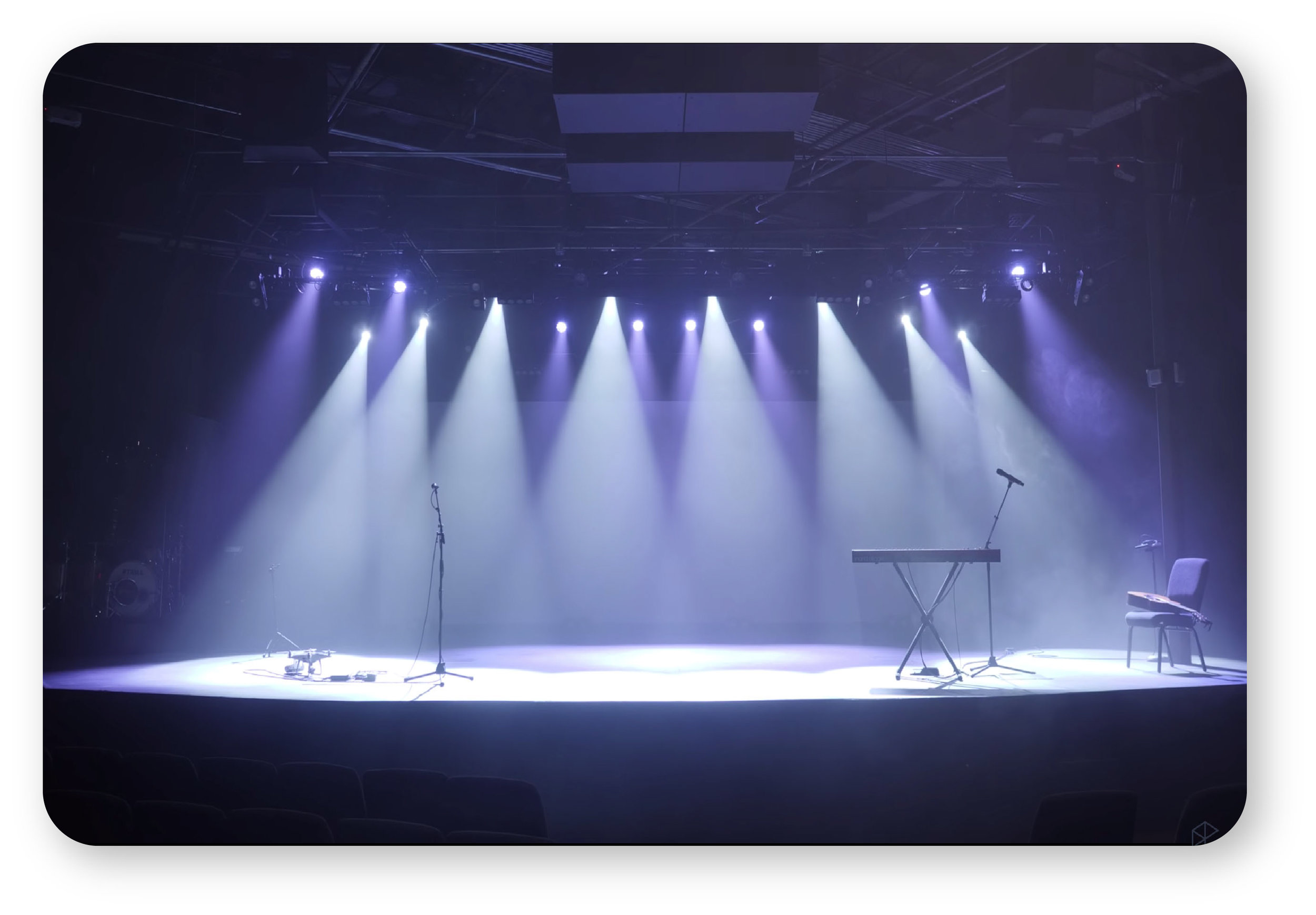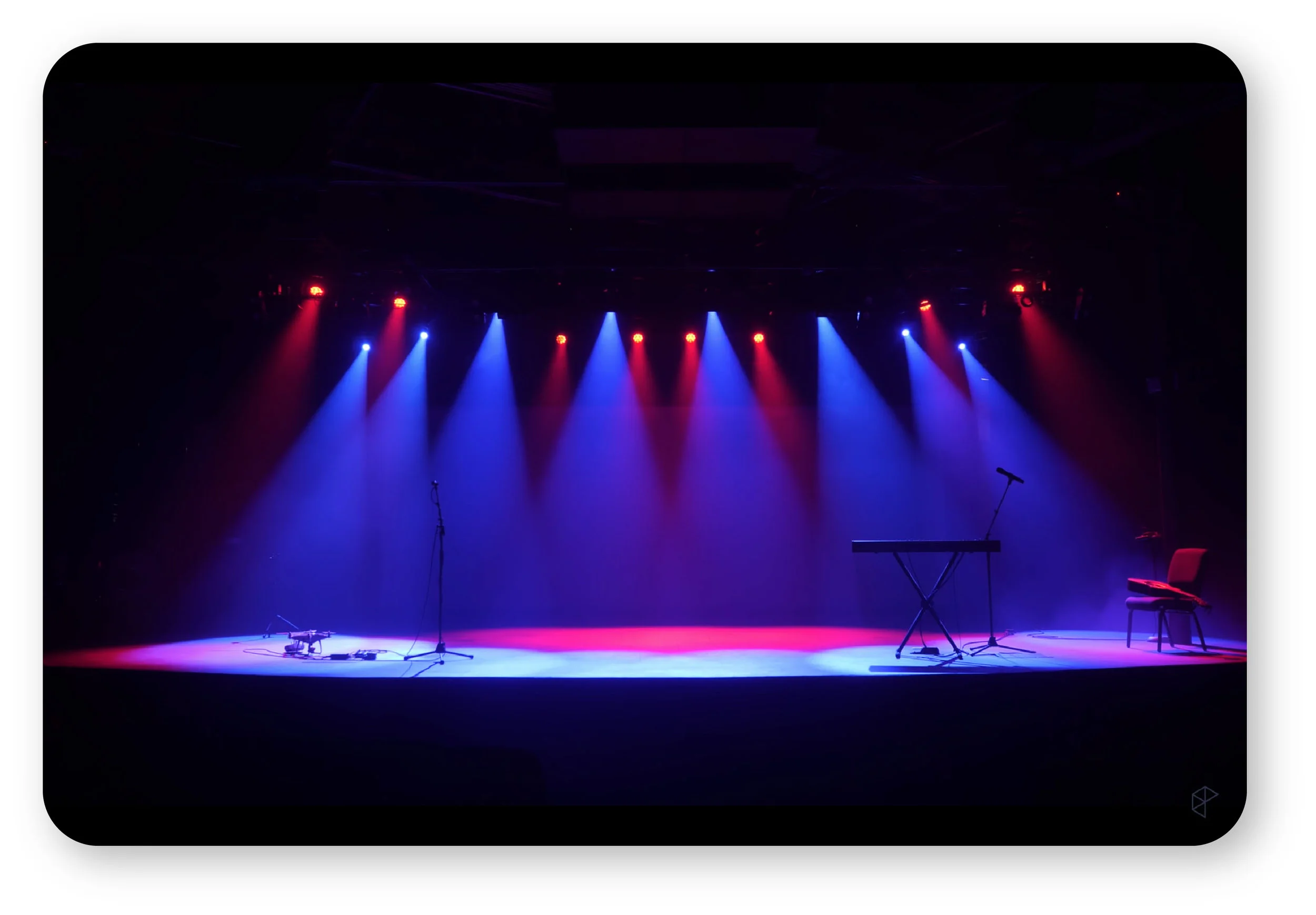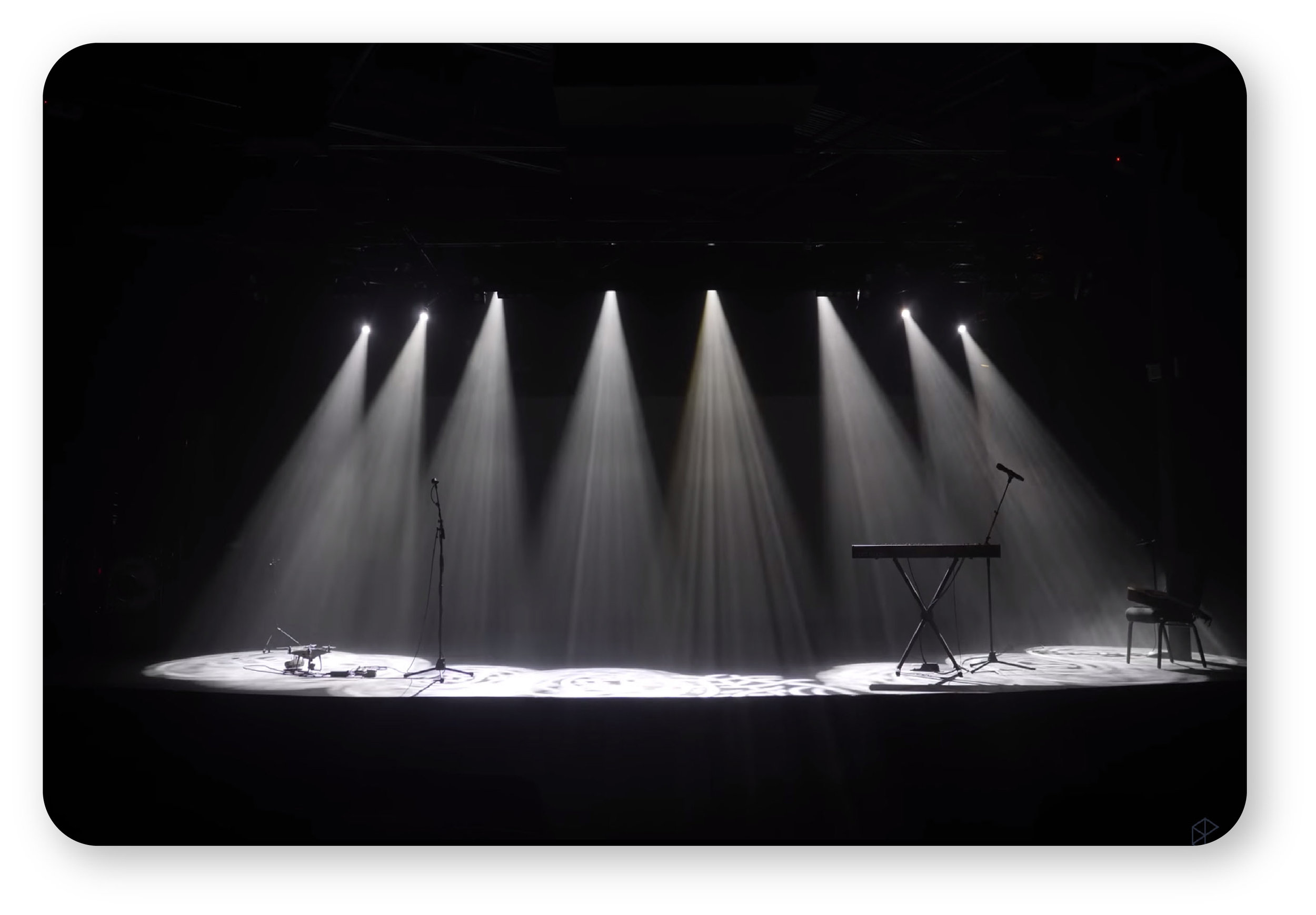Mark Wray is the technical producer at the Lakewood campus of Red Rock church in Colorado, and I chatted with him about how to create the best lighting design for your church.
I learned a TON from his expertise and I’m stoked to share it with you. We chatted about some quick tips on how to light strategically and the best design practices for churches that won’t break the budget. Even though he comes from a huge church, his insights apply to lighting design at small churches (like mine) as well.
We’re going to cover three different aspects of lighting in this article.
How to light the speaker
How to light the worship band
How to use color to create
Mark began as a volunteer on the audio team when Red Rock was founded in 2005. At the time, they only had a couple dozen people attending, and Mark said the early days were pretty tough when it came to production.
“It was rough. It was scrappy. We did what we could to put stuff together to make Sundays work. Didn't have resources, didn't have a lot of people to help out with things. So we kind of just pieced together some production elements, some lighting, some PA, we had stage wedges for monitors.”
Since the, they’ve seen some massive growth and have 14,000-15,000 attendees each weekend. Which has also caused his role to change quite a bit.
“I've grown away from the audio side of things where I started out and moved into more lighting and producing…So that's kind of where I am now overseeing the Lakewood campus productions as well as a lot of major events for, like a few Lakewood campus concerts, youth events that kind of thing.”
He’s done a lot of work to help get Red Rock to where it is today and he took the time to share his techniques for creating quality lighting design.
How to light the speaker
Lighting can look pretty complicated, but I’ve simplified things so we’ll only cover one principle at a time and build out from there.
Light from the left
To start out, light your speaker from the right side of the house.
Then, put a light off to the left side up there so that it’s shooting the left side of the speaker’s body.
As you can see, the light is going from head to toe, there are no dark spots, it's a pretty flat light all the way through. So what you want to do now is illuminate him from the right.
2. Light from the right
Now, both the left and right side are equally lit, but you’ll need a third light so the speaker doesn’t look flat.
3. Use backlight to add dimension
With only two front lights, the speaker looks pretty one dimensional. To round him out and add dimension to his head and shoulders, use a back light to round out his body some more.
With the backlights on, there’s more warmth and glow on his shoulders and head. When we’re looking at him from the audience, he looks more three dimensional.
So that's how you light a speaker. Just have some great front lighting, the two lights up top and have one or two back lights and there you go!
How to light the worship team
Since I’m a worship leader, I volunteered to step in and let Mark light me.
Only use one light
Lighting a worship leader is a little bit different.
Mark doesn’t use any of the same lights to light the speaker and he only dedicates one light for each individual worship position whether they’re upstage or downstage. Any more than one light can turn into overkill and take up too much attention.
2. Make the stage light slightly off-centered
Mark used one ellipsoidal coming in from the house right side and it wasn’t directly shining on me. Putting it a bit off to the side brings in some shadows and adds depth because if the lights were straight on, I would look flat; with the light coming in from the side, you’ll see more shadows.
3. Use a color wash
Mark will also add a color wash to change the mood and evoke different feelings for the audience.
Pro-tip: It’s important to not have any of those color washes on the front tress, they stay in the back-lighting and side-lighting.
The front lighting comes from the ellipsoidal lights and lights that have more of a natural tungsten look. Most of the LED lights here on the Red Rock stage are used as back/side lighting.
How to use color to create scenes
Color combinations
These two designs are good for the beginning of service. Both the spot fixtures and are desaturated and are in their home position.
Mark uses spot fixtures with wheels in them. Below are the colors he has to work with.
Mark’s basic rules for creating lighting scenes
Below, Mark has some great tips that you can implement during your normal Sunday worship service and during special events like Advent, Christmas Eve, Good Friday and Easter.
Faster songs usually require brighter lights.
Slower songs, on the other hand, require darker lights.
However, sometimes it could be a good idea to use a saturated amber color and white to create a look that people aren’t used to seeing.
3. Don’t use two really saturated colors
Don’t use something like a red and blue. It’s a look you don’t see and it can distract people. Definitely not for a Sunday or worship song.
4. Avoid the “Green Goblin” look
Don’t combine yellow and green. It just doesn’t look attractive at all, although it may be useful for a youth event or special concert.
5. Your lights don’t need to move.
Your lights may move, but you don’t always need to move your lights. Creating an intentional, stationary look goes a long way and helps people focus.
Haze
For Mark, haze is an integral part of a worship service because it helps fill in the spaces and make the scene more full.
Without haze interacting with the light, it wouldn’t feel complete and people wouldn’t be able to see the nuances and subtle movement of the light beams.
These are some of the best practices and essentials of lighting design for a church worship context from one of the best light designers out there.
Once you’ve got your lights set up, check out some more content from Churchfront.
If you’re interested in the tech we talked about today or if you need help with setting up and mastering the tech at your church, I’d love to connect. You can apply to work with me and my team here.
We specialize in coming alongside worship leaders and tech team leaders and helping them build a thriving ministry from the ground up.
Give me a call and we’ll chat!























